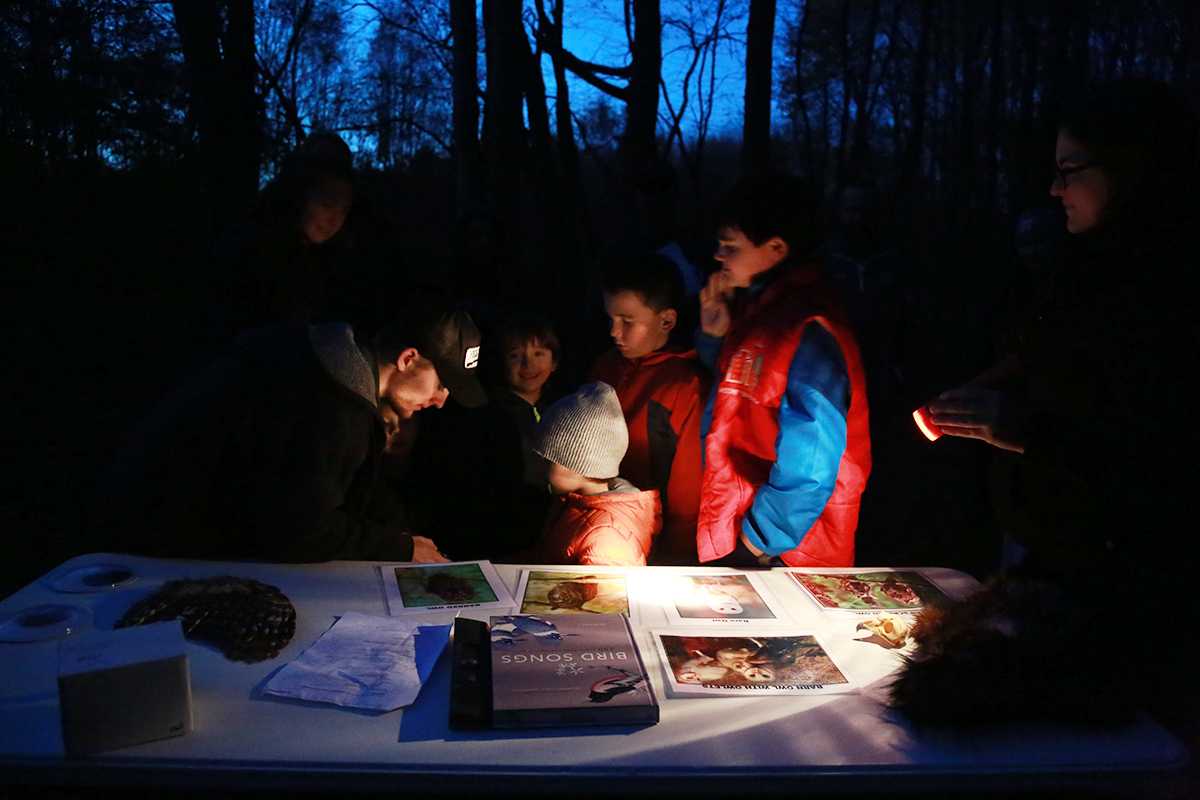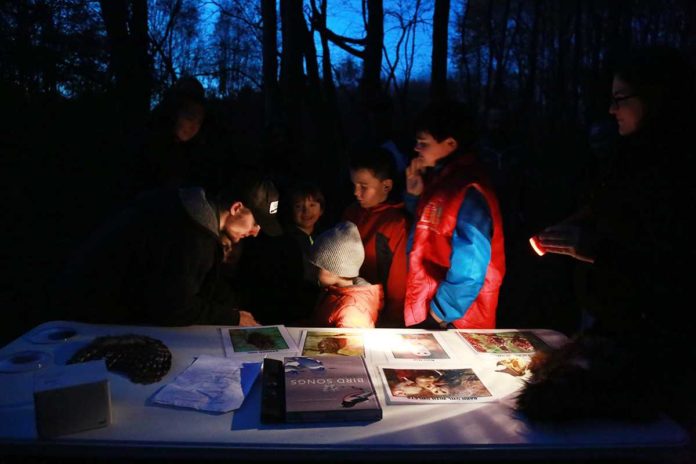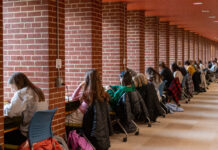 Kendall Scott
Kendall Scott
Students taking Interpretive Methods this fall created the Green Interpretive Halloween trail for local children Friday evening, presenting several Halloween-themed stations along the hiking trail behind the Robert A. Macoskey Center.
The class, taught by Dr. Rebecca Thomas of the Parks and Recreation department, is designed to give Slippery Rock students the opportunity to create an interpretive program that gives them hands-on experience that they can put on their resumes.
“Interpretation really is an art of connecting people to natural or cultural resources,” Thomas said. “It’s not simply about sharing information, it’s about doing so in a fun way that’s connected to a specific theme and has some sort of relevance to a specific audience.”
Thomas also said her students have been learning about this specific style of interpretation the entire semester, so creating a non-scary Halloween trail for children to have a fun and educational experience was a perfect project for her students.
The trail, which is roughly 0.7 miles, featured multiple interactive stations for kids to learn about different Halloween-themed subjects, including scarecrows, pumpkins, bats, owls, apples and cat tails.
“When we think about interpretation, it’s about helping the audience make a personal connection,” Thomas said. “It’s about why this information is important to you and what meaning can you take away from this program.”
Junior Park and Resource Management major and Thomas’ student, Thomas Koenig, said that he and his classmates spent roughly a month on creating the interpretive trail and was excited to see it all come together.
“We all got into groups and we had to come up with an interpretive theme,” Koenig said. “We’ve had the last couple of class periods [at the Macoskey Center] to plan and had a dry run for practice.”
Koenig also said it was easy to come up with different stations because the Macoskey provided all the resources they needed to create each interpretive station.
“This was a great way for the students to get some practical skills and not only learn about interpretation in class but actually conduct a program,” Thomas said. “We’ve been learning about this particular style of interpretation all semester, so now it’s time for the students to put it into action.”








